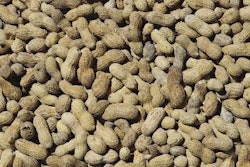Nutritionists and poultry health professionals are constantly faced with a decision as to whether to treat flocks by adding antibiotics or other approved compounds to hen diets in the event of a decline in production.
The Food and Drug Administration (FDA) has the legal authority to approve the use of all feed additives based on efficacy and safety criteria. Approved additives either alone or in combination are listed in reference texts and specific details on addition rates, the Material Safety Data Sheets and statutory withdrawal periods are provided by manufacturers. Statutory label instructions must be followed and a review of suppliers' supplementary literature is strongly advised.
Decision to medicate
The administration of an approved compound should be in accordance with the FDA Principles of Prudent Drug Use for Veterinarians. The decision to medicate and the selection of the compound should be based on a professional field diagnosis taking into account the clinical and post mortem examination, and then subsequently confirmed by laboratory analysis of tissues. Prescription presumes a formal client-professional (or company-employee) relationship with a knowledge of flocks and the circumstances relating to the case.
Flocks medicated according to prescription by a veterinarian should be under the direct control of the health professional. The sensitivity of pathogens should be determined to ensure that administration of an antibiotic is appropriate and would be expected to result in a clinical response.
Drug classes not commonly used in human therapy should be selected to treat flocks. Due attention should be paid to the rules relating to extra-label drug use. Deviation from the Prudent Principles, involving frequent and inappropriate medication will potentially result in the development of drug resistance which can reduce the efficacy of subsequent treatment with the risk of transmission of drug-resistant pathogens to the human population.
Cost versus return
The financial implications of medication are frequently ignored in the desire to "do something." A series of calculations were performed to determine the benefit to cost ratios associated with medication of flocks using approved compound in accordance with label instructions. For the purpose of the exercise, four additives costs were selected ranging from $2 to $8 per ton.
Since the return from administration of an antibiotic is best measured by an improvement in production, three levels of contribution margin were selected ranging from 10 cents per dozen to 30 cents per dozen. The contribution margin represents the difference between realization value in cents per dozen and the cost of production including all fixed and variable costs of operation.
The benefit to cost ratios for the three levels of treatment were determined by calculating the margin contribution from one dozen eggs at a selected contribution margin and dividing this by the incremental cost of the feed additive to produce one dozen eggs. For the calculation, it was assumed that hens would consume feed at the rate of 22 pounds per 100 hens per day and unaffected flocks would maintain an average production rate of 80% on a hen-day basis.
It can be seen from Figure 1 that increasing the cost of an additive, irrespective of contribution margin, reduces the benefit to cost ratio. For example, an additive costing $4 per ton would generate a 29:1 return with a margin of 20 cents. Obviously the benefit to cost ratio increases in proportion to the margin which in the short term associated with a disease outbreak would be attributable to selling price. The conclusion from this series of calculations is that the more expensive the additive the greater the selling price of eggs needs to be to cover cost.
Improvement to offset cost
A second series of calculations was performed to determine the percentage improvement in production required to offset the cost of medication. Again, four additives ranging in price from $2 to $8 per ton were considered at contribution margins of 10, 20 and 30 cents per dozen.
Figure 2 shows that a $4 per ton additive with a margin of 20 cents per dozen will require an improvement of 2.6% in production over non-treated flocks to cover the cost of medication, assuming a totally effective therapeutic response. It is obvious that as the cost of an additive increases, a higher differential in rate of production is required to cover the cost of medication.
At a margin of 20 cents per dozen, an additive costing $8 per ton would require a 5.3% increase in egg production over a non-treated flock covering the duration of medication. It is also evident that as margins decline, the cost of an additive becomes more important in terms of achieving a return. At a margin of 10 cents per dozen, an increase of almost 11% in hen-day production would be required to break even.
If a 20% drop in production is attributed directly to an infection which was susceptible to the antibiotic additive, the use of the compound costing $8 per ton would be justified but would only return a benefit to cost ratio of 2:1.
Under commercial conditions there are seldom opportunities to compare treated and untreated flocks since medication is carried out on an all-or-nothing basis.
The traditional approach results in over-use of additives for either "preventive" application or in an attempt to maximize production without ascertaining and confirming a diagnosis or establishing that the specific antibiotic or medication is effective.
The cost of medication should also be related to the duration of the withdrawal period or taking flocks out of production, as dictated by the FDA resulting in loss of revenue. The calculations provided presume an approved compound with no withdrawal period. The list of compounds currently approved for producing flocks is shown in Table 1.
Selection should be limited
From experience as a consulting veterinarian there are considerable differences in the approach to medication adopted by egg production integrators and individual farmers. There are many operations in the United States that have not used feed additive antibiotics in laying flocks for decades, relying on biosecurity, vaccination and good management practices especially with regard to ventilation to reduce the impact of disease.
The use of antibiotics in other than Europe, Canada and the United States is characterized by a reliance on administration of drugs in feed and water frequently unjustified and representing a potential hazard to consumers. Selection of antibiotic and non-antibiotic therapy should be limited by appropriate diagnostic procedures, compliance with statutory label requirements and an anticipation of a positive return from expenditure on medication.
















